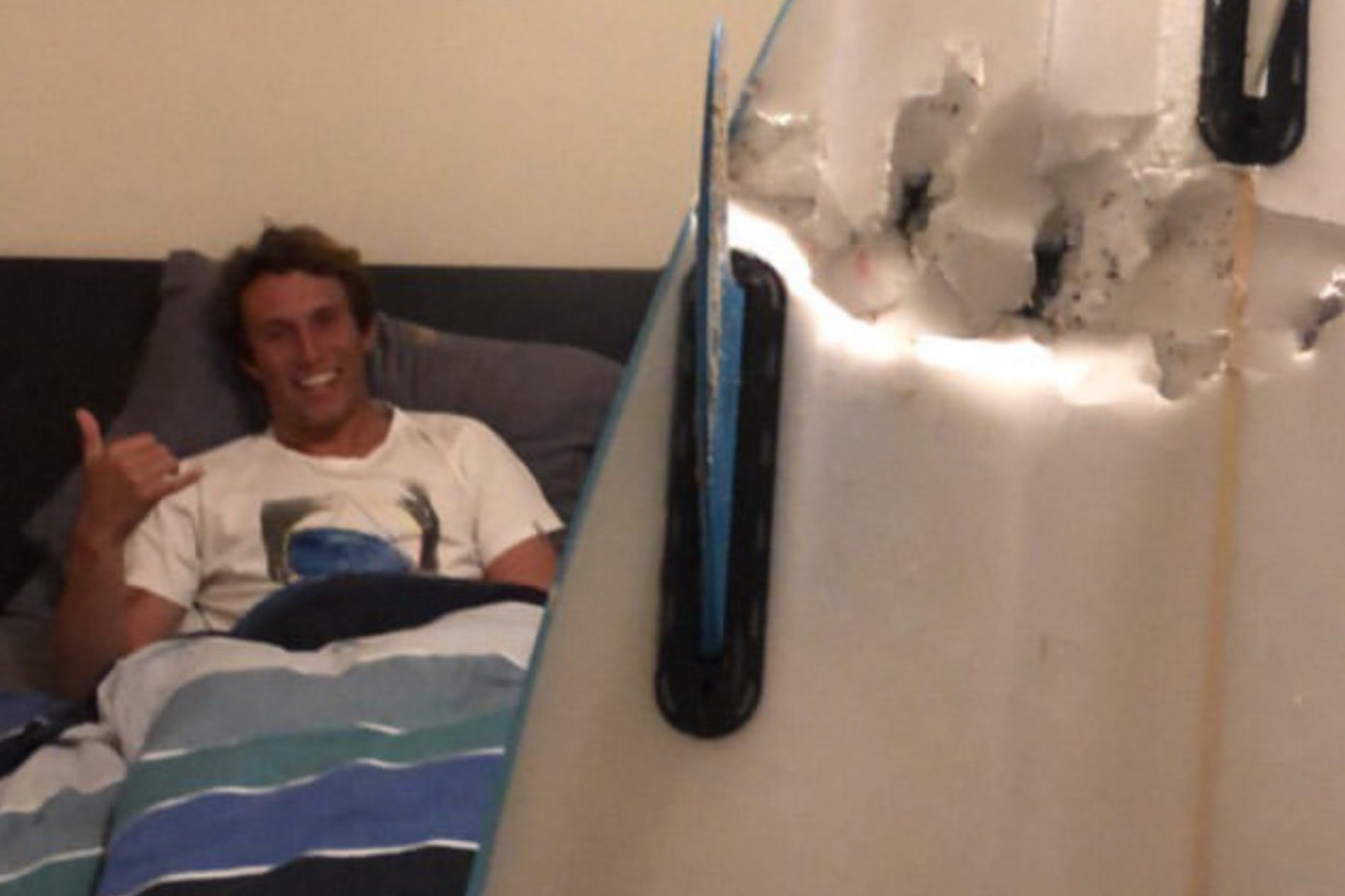Hearing about sharks in the water is often enough to keep people from surfing, but for communication studies sophomore Nick Wapner, surviving a shark attack is only a minor setback.
“I’m definitely going to keep surfing. The ocean is probably where I feel most at home and get my peace,” Wapner said.
Wapner was surfing the morning of Tuesday, Jan. 8 at Montaña de Oro State Park off Sandspit Beach. As his friends moved further down the beach to surf, Wapner continued to surf alone in the same area.
Wapner said a great white shark struck from underneath him at about 10 a.m. as he was lying on his board outside the surf line, waiting to catch another wave.
“I got knocked up in the air and all of a sudden I feel this great pressure clamping down on my legs. I turned around and there it was,” Wapner said.
Wapner was able to get one leg free and kick the shark until it eventually let go and submerged itself underwater as a wave came. Wapner said he caught the wave back to shore, belly boarding all the way to the beach.
Once on shore, Wapner recalled screaming to his friends, “I just got attacked by a shark!”
“I had so much adrenaline, I thought I was fine. I really didn’t know what was going on,” Wapner said. “I looked at my ankles and my legs and just saw blood pouring out of my wetsuit.”
Wapner made the walk back to the car with his friends who transported him to Sierra Vista Regional Medical Center in San Luis Obispo. He received 50 stitches before he was released from the medical center that day.
“It’s every surfer’s nightmare. You don’t really think this is going to happen,” Wapner said.
According to Cal Poly Diving Safety Officer Jason Felton, it is more common to see adult great white sharks in the area during the winter months (Oct.-Feb.) because they are here to feed on the elephant seals. Usually, sharks are not looking to feed on humans.
“It could be mistaken identity, but it also could just be curiosity,” Felton said. “The only tool they have to go investigate something is to go bite it.”
Wapner estimated the great white shark to be about 15 feet in length with an 18-inch dorsal fin. The left side of the shark’s mouth bit into his upper leg and the middle of his thigh, while the right side went all the way to the bone in his ankles.
He said doctors told him it will be a few weeks before he can get back in the water and at least six months until his muscles and tendons are fully healed.
Even though he is currently on crutches and painkillers, Wapner talks about surfing again.
“It’s just such a big part of my life, there’s no way I could let that go,” he said.

